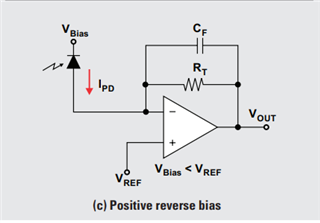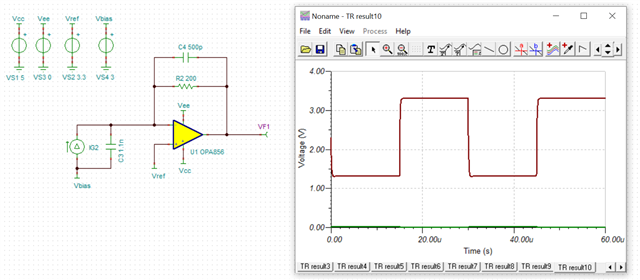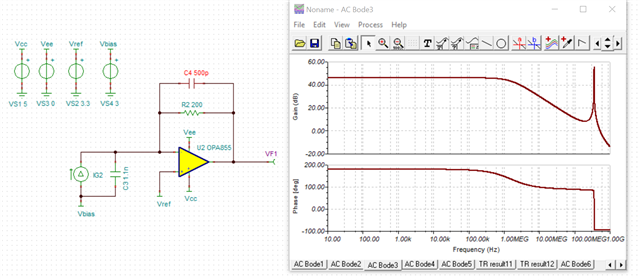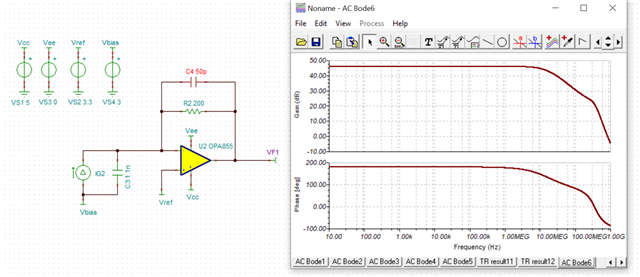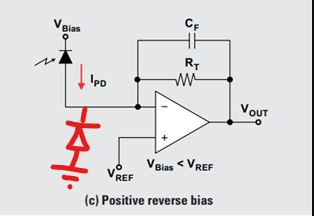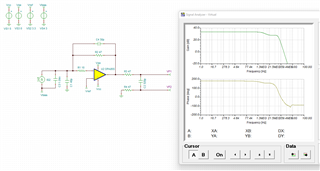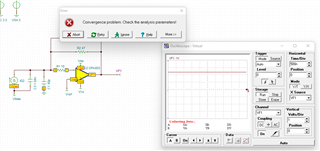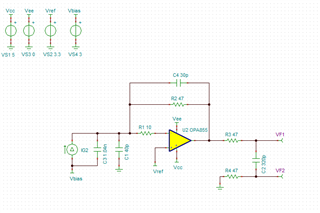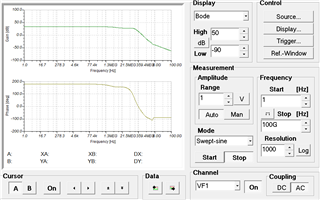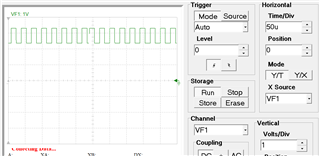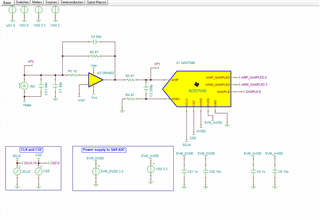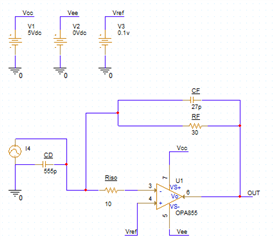Other Parts Discussed in Thread: ADS7046, OPA856
Hello Team,
We want to design a trans-impedance amplifier (TIA) using the opamp OPA855.
The ADC we are using is ADS7046.
The photodiode we are using is J-Series SiPM Sensors.
What is the need for Riso in the schematic?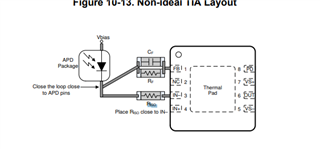
Can you please provide the simulation file for the same circuit?
The Rf is 47E and the Cf is set to 10nF to get an output of approximately 470mV.
The photo diode will be connected in photo conductive mode with its cathode connected to a +ve voltage


